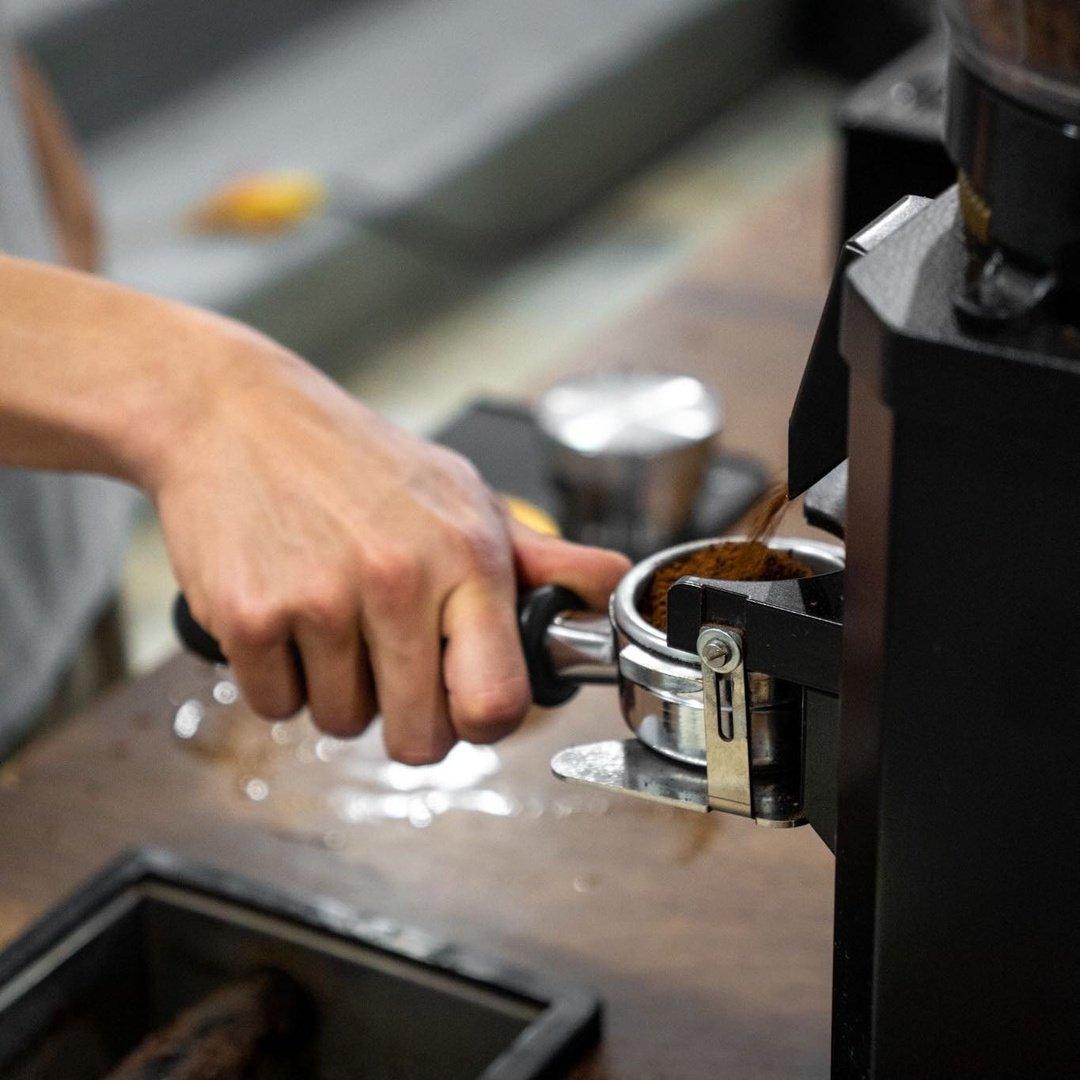
Dialing in Espresso: The Ultimate Guide to Achieving the Perfect Shot
Share
At Procaffeinate, we believe that making espresso is both an art and a science. Whether you’re a home barista or a seasoned professional, dialling in your espresso is one of the most important skills to master.
But what does dialling in actually mean? In short, it is the process of adjusting your grind size, dose, yield, and extraction time to produce a balanced, flavourful espresso. A well-dialed-in shot can bring out sweetness, acidity, and body in perfect harmony, while an improperly dialed-in shot can taste sour, bitter, or weak.
In this guide, we’ll take you through everything you need to know about dialing in espresso, from understanding extraction to making precise adjustments.
Understanding Espresso Extraction
Before we start dialing in, let’s break down what happens when you pull an espresso shot. The goal of extraction is to dissolve the right amount of coffee compounds into your cup.
Under-extraction (too fast): If your espresso flows too quickly, it will taste sour, watery, and lack sweetness.
Over-extraction (too slow): If your espresso takes too long to pull, it will taste bitter, dry, and hollow.
Balanced extraction (just right): The perfect shot is sweet, complex, and well-rounded, with no overwhelming bitterness or acidity.
The key to dialing in is controlling extraction time and coffee flow by adjusting variables like grind size, dose, and yield.
Step-by-Step Guide to Dialing in Espresso
1. Start with a Baseline Recipe
Having a starting point helps you make systematic adjustments. A standard espresso recipe looks like this:
Dose: 18g of coffee
Yield: 36g of liquid espresso (a 1:2 ratio)
Extraction Time: 25-30 seconds
This means that for every 18g of ground coffee, we aim to extract 36g of espresso in 25-30 seconds.
2. Adjusting Grind Size
Grind size is the most important factor in controlling extraction.
If the shot pulls too quickly (under-extracted, sour) Make the grind finer to slow down extraction.
If the shot pulls too slowly (over-extracted, bitter) Make the grind coarser to speed up extraction.
How to Adjust Grind Size:
Make small changes: Adjust your grinder one notch at a time.
Purge a little coffee after adjusting the grinder to avoid mixing different grind sizes.
Test again and observe the flow and taste.
3. Controlling Your Dose
The dose is the amount of ground coffee used in the Portafilter.
Too much coffee (e.g., 20g in an 18g basket) can lead to over-extraction.
Too little coffee (e.g., 16g in an 18g basket) can lead to under-extraction.
Tip: Keep your dose consistent if your espresso recipe calls for 18g, use a precision scale to ensure every shot has the same amount.
4. Monitoring Your Yield
Yield refers to the amount of espresso that ends up in your cup. A 1:2 ratio (18g in, 36g out) is standard, but this can be adjusted:
More yield (e.g., 40g out) Creates a more balanced and slightly lighter shot.
Less yield (e.g., 30g out) Results in a more intense, concentrated shot.
Use a scale to weigh your espresso output to ensure consistency.
5. Tracking Your Extraction Time
The ideal extraction time for espresso is 25-30 seconds.
If your shot pulls in 15 seconds The grind is too coarse (under-extracted, sour).
If your shot takes 40 seconds The grind is too fine (over-extracted, bitter).
Tip: Adjust grind size first, then fine-tune by tweaking dose and yield.
Common Espresso Issues & How to Fix Them
|
Problem |
Cause |
Solution |
|
Sour, weak shot (under-extracted) |
Too coarse, too little coffee, short extraction time |
Finer grind, increase dose, extend extraction time |
|
Bitter, dry shot (over-extracted) |
Too fine, too much coffee, long extraction time |
Coarser grind, reduce dose, shorten extraction time |
|
Fast flow, watery shot |
Too coarse, not enough coffee |
Finer grind, increase dose |
|
Slow flow, choking shot |
Too fine, too much coffee, tamping too hard |
Coarser grind, decrease dose, adjust tamping pressure |
Final Tips for Dialing in Espresso Like a Pro
Use Fresh, High-Quality Coffee Freshly roasted beans (7-21 days post-roast) provide the best flavour.
Use a Precision Scale Weigh both your dose and yield for accuracy.
Keep Your Equipment Clean Old coffee oils and grounds can affect flavour and extraction.
Adjust One Variable at a Time If you change too many things at once, its harder to identify the issue.
Taste, Adjust, Repeat Every coffee behaves differently, so refining your espresso is an ongoing process.
Final Thoughts: The Art of Dialling in Espresso
Dialling in espresso takes patience, precision, and practice, but once mastered, it elevates your coffee experience to a whole new level. By carefully adjusting grind size, dose, and yield, you can extract the perfect balance of flavors in every shot.
At Procaffeinate, we are passionate about providing exceptional coffee for home baristas and professionals alike. If you want to level up your espresso game, check out our selection of freshly roasted specialty coffee




